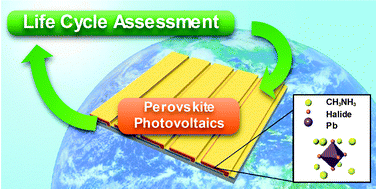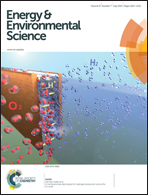Perovskite photovoltaics: life-cycle assessment of energy and environmental impacts†
Abstract
The past few years have witnessed a rapid evolution of perovskite solar cells, an unprecedented photovoltaic (PV) technology with both relatively low cost and high power conversion efficiency. In this paper, we perform a life cycle assessment for two types of solution-processed perovskite solar modules to shed light on the environmental performance of this promising class of PVs. One module is equipped with FTO glass, a gold cathode, and mesoporous TiO2 scaffold; the other is equipped with ITO glass, a silver cathode, and ZnO thin film. We develop comprehensive life cycle inventories (LCIs) for all components used in the modules. Based on the LCI results, we conduct life cycle impact assessment for 16 common life cycle impact indicators, Eco-indicator 99, and two sustainable indicators: the energy payback time (EPBT) and the CO2 emission factor. We compare the results of Eco-indicator 99, the EPBT, and the CO2 emission factor among existing PV technologies, and further perform uncertainty analysis and sensitivity analysis for the two modules. The results demonstrate that perovskite solar modules possess the shortest EPBT, and future research should be directed to improving the system performance ratio and the device lifetime, and reducing precious metal consumption and energy-intensive operations in order to lower the CO2 emission factor.


 Please wait while we load your content...
Please wait while we load your content...